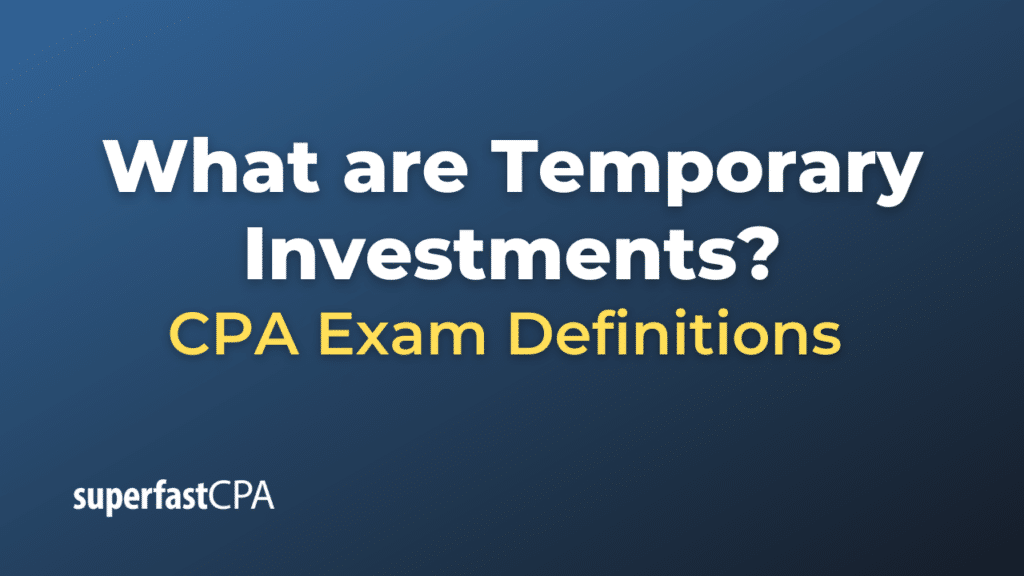Temporary Investments
Temporary investments, also known as short-term investments or marketable securities, refer to investments that a company intends to hold for a short period, typically less than one year. These investments are easily convertible into cash and are usually purchased with the intent of utilizing excess cash on hand for a short duration until better long-term investment opportunities arise or the cash is needed for operational purposes.
Temporary investments are considered to be more liquid than long-term investments but are less liquid than cash or cash equivalents.
Types of Temporary Investments:
- Commercial Paper: Short-term unsecured promissory notes issued by companies with high credit ratings.
- Treasury Bills: Short-term securities issued by the government, typically with maturities ranging from a few days to one year.
- Money Market Funds: Investment funds that invest in short-term debt securities such as U.S. Treasury bills and commercial paper.
- Certificates of Deposit (CDs) : Time deposits offered by banks with a specified interest rate and maturity date.
- Short-term Government Bonds: Government-issued securities with maturities of one year or less.
- Marketable Equity Securities: Stocks or equity investments that can be easily sold in the stock market.
- Short-term Corporate Bonds : Bonds issued by corporations with maturities of less than one year.
On the balance sheet, temporary investments are typically classified as “current assets” because of their short-term nature. The accounting treatment requires these investments to be listed at fair value, with any unrealized gains or losses generally reported in the income statement or other comprehensive income, depending on the specific accounting standards in place.
Example of Temporary Investments
Let’s provide a more detailed example involving temporary investments on a company’s financial statements:
Scenario:
TechTrend Inc. is a tech startup company that recently raised $10 million from venture capitalists. While TechTrend plans to use a significant portion of this funding for research and development, they don’t anticipate needing the entire amount immediately. Therefore, the CFO of TechTrend decides to invest $5 million in temporary investments to earn some returns rather than letting the cash sit idle.
The CFO selects the following temporary investments:
- $3 million in a 3-month Certificate of Deposit (CD) at a local bank with an annual interest rate of 2%.
- $2 million in a Money Market Fund that historically has returned an annual rate of 1.5%.
Financial Statement Impact:
Balance Sheet (extracted):
Current Assets:
Cash: $5 million
Temporary Investments: $5 million (comprising $3 million in CD and $2 million in Money Market Fund)After 3 Months:
- The CD will mature, and TechTrend will receive the principal amount plus interest.
- Interest from CD = $3 million x 2% x (3/12) = $0.015 million or $15,000.
- Returns from Money Market Fund = $2 million x 1.5% x (3/12) = $0.0075 million or $7,500.
Updated Balance Sheet (extracted):
Current Assets:
Cash: $5.0225 million ($5 million + $15,000 from CD + $7,500 from Money Market Fund)
Temporary Investments: $2 million (Only the Money Market Fund remains as the CD has matured.)In this example, TechTrend Inc. made productive use of its excess cash by putting it in temporary investments and earning a return. When the CD matured after 3 months, the principal and interest were added back to the cash balance, reflecting the liquid nature of such short-term investments.













